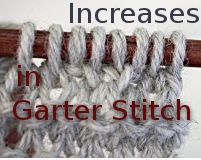-
The essential tools for beginners
If you’re new to knitting, the only things that you truly need are one knitting needle (unless your project calls for several sizes), a tapestry needle and yarn. I do not advise on buying more than you absolutely need, especially when it comes to knitting needles. You’ll discover what you like when you knit more. When you find it hard to put your knitting down, you know that you’ve found your dream needles. Only then it’s wise to collect needles of every size of that brand. You should also try the magic loop method (search for “magic loop method” on YouTube). It’s a technique that allows you to knit any…
-
One-Row Buttonhole
My favorite buttonhole is a simple twisted yarn over. But when I need a bigger one, a one-row buttonhole is my preferred technique. Below is an excerpt from my pattern Minimissimi Sweater Coat. Step 1: Work to the buttonhole position, slip 1 stitch knitwise, bring the yarn to the front and drop it (upper left). *Slip 1 stitch knitwise (upper middle), pass the previously slipped stitch over the just slipped stitch. One stitch bound off. Repeat from * to bind off the required number of buttonhole stitches (upper right). Step 2: Return the last stitch to the left needle. Turn work. Bring yarn forward. *Insert the right needle…
-
Increases and Decreases
I’m obsessed about increases and decreases. I almost always make a swatch for each project to decide on which increase and decrease to use. Top down designs are particularly challenging as increases often have to be worked on every row and not many increases look good that way. In my most recent design Matilde Cardigan, I had one more problem: the design is asymmetric. One raglan seam is worked with increases and the other is worked with decreases. After trying out all the increases I knew about, I came up with my own. Here you are: Lifted increase used in Matilde Cardigan inc1-L – insert left needle into the st…
